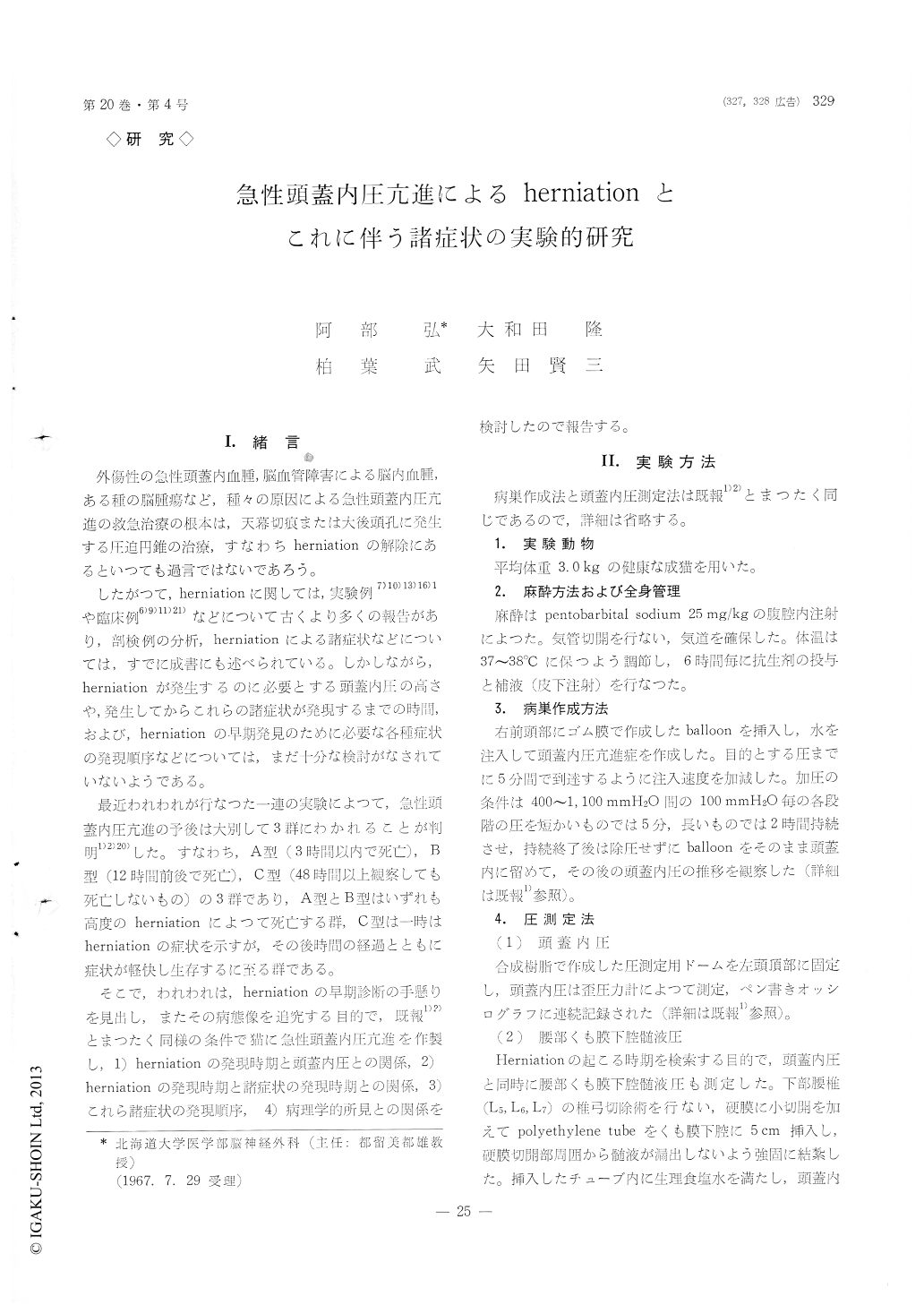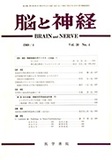Japanese
English
- 有料閲覧
- Abstract 文献概要
- 1ページ目 Look Inside
I.緒言
外傷性の急性頭蓋内血腫,脳血管障害による脳内血腫,ある種の脳腫瘍など,種々の原因による急性頭蓋内圧亢進の救急治療の根本は,天幕切痕または大後頭孔に発生する圧迫円錐の治療,すなわちherniationの解除にあるといつても過言ではないであろう。
したがって,herniationに関しては,実験例7)10)13)16)1や臨床例6,9)11)21)などについて古くより多くの報告があり,剖検例の分析,herniationによる諸症状などについては,すでに成書にも述べられている。しかしながら,herniationが発生するのに必要とする頭蓋内圧の高さや,発生してからこれらの諸症状が発現するまでの時間,および,herniationの早期発見のために必要な各種症状の発現順序などについては,まだ十分な検討がなされていないようである。
Although many syndromes associated with mass lesions above the tentorium are now ascribed to the effects of transtentorial herniation of the temporal lobe and some of them are to foramen magnum herniation of the cerebellar tonsils, there have been relatively few attempts to know the order of ap-pearance of these symptoms in association with the exact time of occurrence of the herniation. The experiment reported here was made in an attempt to aid an early diagnosis of such herniations.
Method of Experiment:
The experiment was carried out under in-traperitoneal pentobarbital anesthesia on adult mon-grel cats weighing between 2 and 4 kg. An ex-panding extradural lesion was made with exactly same technique as we previously reported. Method of the measurement of supratentorial intracranial pressure was also same as our previous report. This time, the lumbar subarachnoid fluid pressure was also measured simultaneously by inserting a small calibered polyethylene catheter. Arterial pressure was recorded by inserting a catheter into the ab-dominal aorta through the right femoral artery. Respiration was recorded by placing thermister trans-ducer over the tracheostomy which was made to all the animals. Size of the pupils and the pulse rate were also checked every 5 to 10 minutes.
Results:
Dissociation of supratentorial and lumbar pressure was observed when the supratentorial pressure was elevated up to 400~500 mmH2O by inflating the bag placed in the right frontal extradural space. Few minutes after this block occurred, change of respir-ation was observed and then followed by enlarge-ment of the right pupil. The time interval between the respiratory change and the appearance of ani-socolia varied according to the pressure given. The interval was longer when the given pressure was lower. Althongh bradycardia and elevation of blood pressure are known to be important signs of trans-tentorial herniations, they did not appear in early stage, but appeared long time after above two signs-appeared. These changes occurred only when the intracranial pressure rose to 1,500 mmH2O or higher in the terminal stage.
Conclusions :
1) Dissociation of the supratentorial pressure and the lumbar subarachnoid pressure occurred when the supratentorial pressure was elevated up to. 400~500 mmH2O.
2) Following above block (in other words, follow-ing to the completion of herniation), first clinical signs observed were the change of respiration and the size of pupils.
3) Elevation of blood pressure and diminution of pulse rate were observed much later and they occurred only in association with marked eleva-tion of intracranial pressure.

Copyright © 1968, Igaku-Shoin Ltd. All rights reserved.


